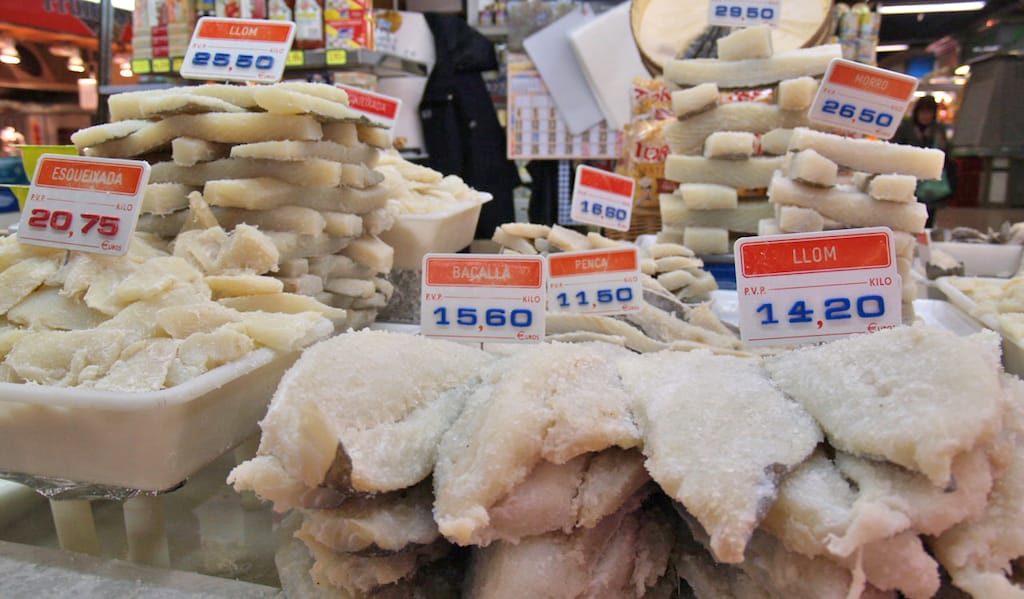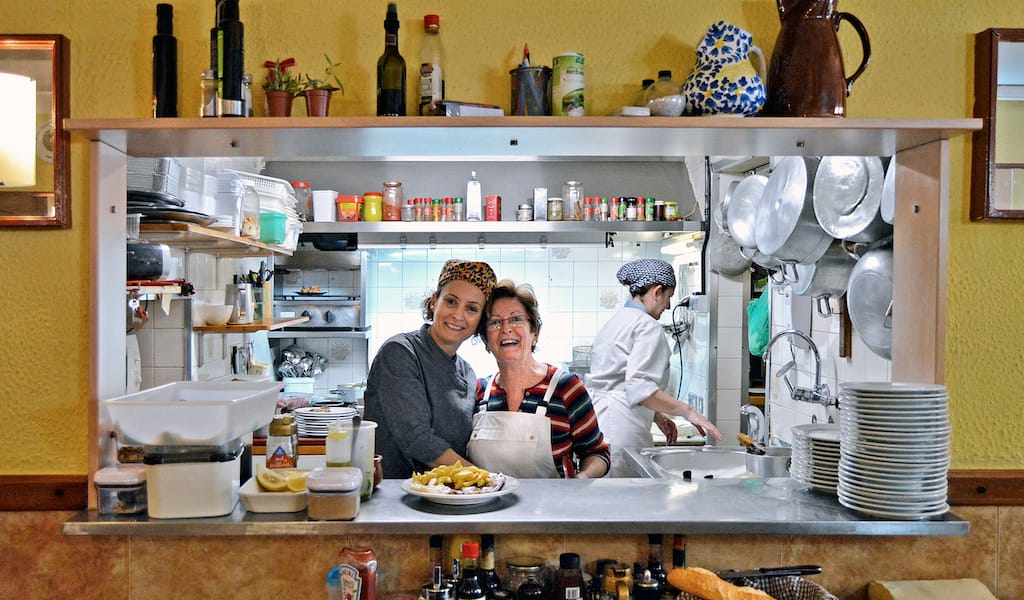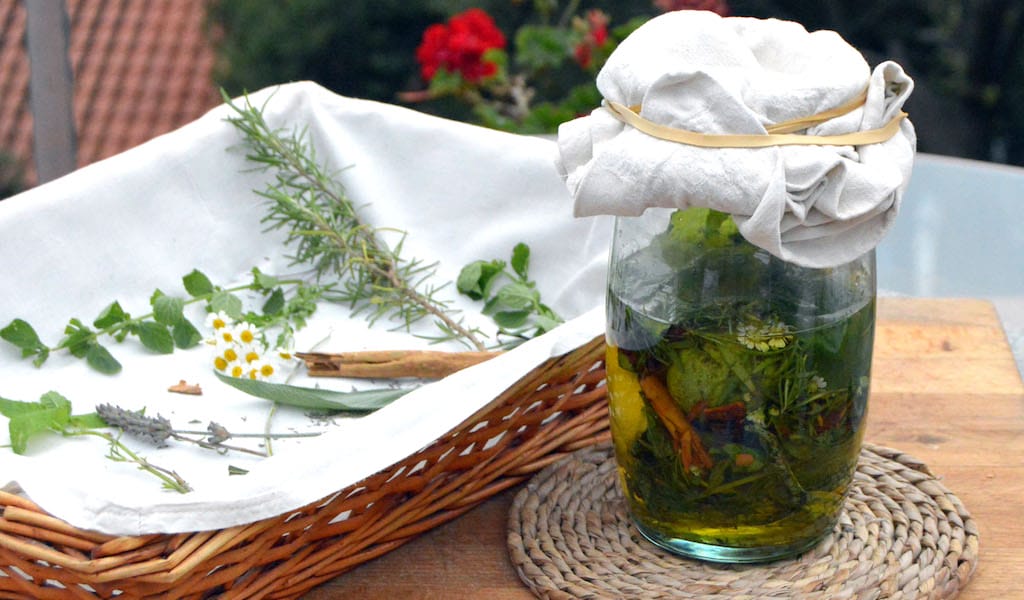Coca is a word used in Catalonia and neighboring regions for many kinds of baked doughs and pastries, both sweet and savory. The Catalan and Occitan word has the same root as “cake” and comes from the Dutch word kok, which entered the local lexicon during the reign of the Carolingians in Catalonia (759-809). Because they range so widely in type and appearance, coques usually come with an additional name to help identify them. For instance, coca de Sant Joan (for St. John’s Eve) is sweet with confited fruit, coca de vidre (glass) is studded with pine nuts and coca de llardons, as its name suggests, has pork cracklings mixed into the dough and is also dusted with sugar.
Coca de recapte is a direct relative of savory flatbreads developed by Greeks, Romans and Arabs, which also gave rise to Italian pizza, French pissaladière, Turkish pide and Armenian lahmacun, among others. It’s difficult to trace the exact origins of coca de recapte, but they are probably linked to the arrival of the Romans to the eastern part of the Iberian Peninsula, followed by the Arabs. In fact, many round coques (also called roscos or tortells) are connected with pre-Christian sun cults, as well as with some Roman religious celebrations, such as Saturnalia.
Traditionally, coca de recapte (“collection,” or gathering of ingredients) was made in villages (in Catalonia, it is especially typical to Lleida province) at a time when peasants did not have their own ovens at home. They would collect the produce from their vegetable gardens and take it to the village bakery, where the bakers would use the contributions from the villagers to bake cocas, which everyone would share. Some villages in Spain carry on similar traditions today, with preparations such as empanadas (like calzones, cocas which have been folded in half and sealed) – except that each household’s ingredients are baked into coques or empanadas or other items separately from those of other households.
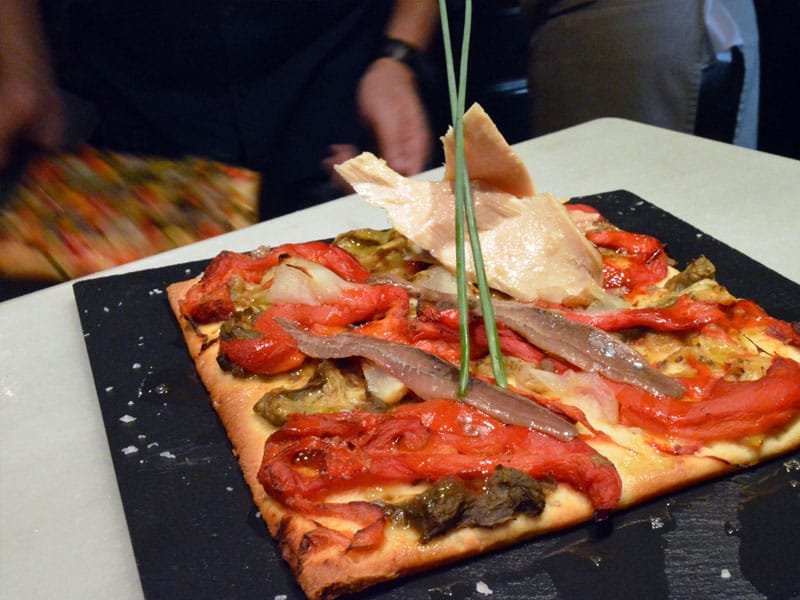
There have always been practical reasons for the popularity of coques. They were easy to transport and to eat in the countryside and at rural gatherings and celebrations. They also solved the problem of dough that wouldn’t rise in the oven: look flat? Just put some leftover vegetables and butifarra (Catalan sausage) on it and voilà – coca de recapte for dinner!
In Catalonia, the most traditional coca de recapte is made with escalivada, a preparation of roasted eggplant, red peppers and onions, sometimes also topped with sardine fillets, fresh or tinned, or butifarra and onion or spinach and pine nuts. Many combinations of ingredients (mushrooms, pancetta, tuna, olives, rabbit, duck, prawns, artichokes, peas, salt cod, etc.) are popular these days; the addition of cheese, for example, is a modern development. And better yet, all these versions can be enjoyed hot, cold or even the next day.

Coques de recapte are easy to find in bakeries all over Barcelona and are also becoming increasingly common in restaurants and tapas bars, often with the chef’s own variations or innovations. We tasted some delicious coques de recapte at L’Antic Bocoi, Rosa and Marc Balfegó’s charming Barrio Gótico restaurant. Located in a timeworn building that still houses old Roman walls, the eatery has an oven but no kitchen. Its menu includes salads, some tapas and a wide selection of coques de recapte made with great local ingredients, such as the classic escalivada, delicate yet satisfying duck ham and Urgellia cheese (which comes from the Pyrenees) and two of our favorites, a juicy, multidimensional eggplant with herring and rich mushroom with salt cod.
El Bar del Pla serves a particularly excellent coca de recapte topped with sardines. Tonka, a restaurant in Sant Antoni with great breakfast, brunch and snacks, thoughtfully prepared from mostly organic ingredients, serves an escalivada coca with goat cheese and romesco sauce.
 March 12, 2020 In the House of Cod
March 12, 2020 In the House of Cod
In Spain, preserving the rituals of Lent – historically a period of 40 days of prayer, […] Posted in Barcelona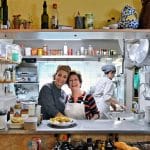 April 10, 2019 Out to Lunch
April 10, 2019 Out to Lunch
There’s something so soothing about taking refuge in a simple restaurant in the middle […] Posted in Barcelona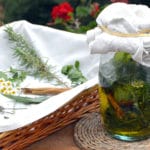 June 23, 2014 Ratafía
June 23, 2014 Ratafía
In Catalonia around the summer solstice, we make one of our most traditional liqueurs, […] Posted in Barcelona
Published on May 19, 2015
Related stories
March 12, 2020
BarcelonaIn Spain, preserving the rituals of Lent – historically a period of 40 days of prayer, penance and pious abstinence from eating meat that leads up to Easter – was up until the second half of the 20th century mostly the responsibility of priests. Nowadays, however, it is more often the country’s chefs who are…
April 10, 2019
BarcelonaThere’s something so soothing about taking refuge in a simple restaurant in the middle of a tough work day. These temples of comfort food dot Barcelona streets, with their daily specials written on a flimsy piece of paper or a blackboard. Come midday, laborers of all kinds – from blue-collar workers to executives in suits…
June 23, 2014
BarcelonaIn Catalonia around the summer solstice, we make one of our most traditional liqueurs, ratafía, for which the herbs, fruit and flowers that are macerated in alcohol must be collected on Saint John’s Eve, or June 23. This highly aromatic digestif has long been believed to have medicinal properties. There’s even an old Catalan rhyme…













































